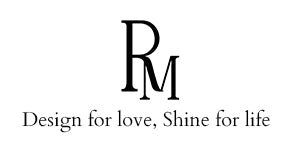Which Stone Is Best for an Engagement Ring?
Why Is Choosing the Right ring Stone Important?
An engagement ring is more than just jewelry—it’s a symbol of love, commitment, and a shared future. Choosing the right gemstone is a pivotal decision that blends practicality with personal expression. Factors like durability, aesthetics, cost, and personal significance all play a role in finding the perfect stone. This article explores the most popular gemstones for engagement rings, compares their qualities, and offers guidance to help you select the best one for your partner.
What Are the Popular Stone Options?(5 types of stone recommended)
Diamond
Diamonds are the classic choice for engagement rings, renowned for their unmatched hardness (10 on the Mohs scale) and brilliant sparkle. Their durability makes them ideal for daily wear, resisting scratches and damage over time. Diamonds symbolize eternal love, making them a timeless and traditional option. However, their high cost can be a drawback, though lab-grown diamonds offer a more affordable alternative without sacrificing quality.
Pros: Unparalleled durability, classic appeal, wide range of cuts and styles.
Cons: Expensive, especially for high-quality natural stones.
Sapphire
Sapphires, particularly blue sapphires, are a stunning alternative to diamonds. With a hardness of 9 on the Mohs scale, they are highly durable and suitable for everyday wear. Sapphires are often associated with royalty (think Princess Diana’s iconic ring) and come in various colors, though blue remains the most popular. They offer a unique aesthetic at a lower price point than diamonds.
Pros: Durable, vibrant color, more affordable than diamonds.
Cons: Color variations can affect value; less sparkle than diamonds.
Moissanite
Moissanite is a rising star in engagement rings, prized for its near-diamond brilliance and impressive hardness (9.25 on the Mohs scale). Originally discovered in a meteorite, moissanite is now lab-created, making it an ethical and budget-friendly choice. Its fiery sparkle often surpasses that of a diamond, appealing to those seeking maximum brilliance without the high cost.
Pros: Affordable, brilliant sparkle, ethical sourcing.
Cons: Less traditional, may not carry the same prestige as diamonds.
Emerald
Emeralds are beloved for their rich green hue, which exudes elegance and sophistication. With a hardness of 7.5–8 on the Mohs scale, they are less durable than diamonds or sapphires, requiring more care to avoid scratches or chips. Their unique color makes them a bold choice for those who value individuality.
Pros: Striking color, luxurious appeal.
Cons: Lower durability, prone to inclusions, requires careful maintenance.
Ruby
Rubies, with their bold red color, symbolize passion and love, making them a romantic choice for an engagement ring. With a hardness of 9, they are durable enough for daily wear. Rubies are rare and can be as expensive as high-quality diamonds, but their vibrant hue sets them apart.
Pros: Durable, vibrant, and symbolic.
Cons: High cost, potential inclusions affecting clarity.
What Factors Should You Consider When Choosing a Stone?
Selecting the best stone involves balancing several factors:
- Durability: The Mohs scale measures a stone’s resistance to scratches. For daily wear, stones with a hardness of 9 or higher (diamonds, sapphires, rubies) are ideal, while emeralds require more caution.
- Aesthetics: Consider your partner’s style—do they prefer the classic sparkle of a diamond, the bold color of a ruby, or the unique green of an emerald? The cut and clarity also affect the stone’s appearance.
- Cost: Diamonds are typically the most expensive, while moissanite and lab-grown stones offer budget-friendly options. Set a budget to narrow your choices.
- Personal Significance: Some stones carry cultural or personal meaning (e.g., sapphires for loyalty, rubies for passion). Ethical considerations, like choosing lab-grown or conflict-free stones, may also matter.
- Maintenance: Stones like emeralds require regular care to prevent damage, while diamonds and sapphires are low-maintenance.
Which Stone Is the Best Choice?
The “best” stone depends on your priorities. Diamonds excel in durability and tradition, making them ideal for those who value a classic, long-lasting ring. Sapphires and rubies offer durability with bold colors, perfect for those seeking a distinctive look. Moissanite is a cost-effective, ethical choice with diamond-like brilliance, while emeralds suit those who prioritize unique aesthetics over durability. For active lifestyles, diamonds or sapphires are safest; for budget-conscious buyers, moissanite shines. Ultimately, the choice should reflect your partner’s personality and lifestyle while balancing practicality and sentiment.
How to Make the Final Decision?
There’s no universal “best” stone for an engagement ring—each option offers unique qualities. Diamonds remain the gold standard for their durability and timeless appeal, but sapphires, moissanite, emeralds, and rubies provide stunning alternatives for those seeking individuality or affordability. Consider your partner’s style, your budget, and the ring’s intended use when making your decision. Consulting with a trusted jeweler can help ensure you choose a high-quality stone that holds both beauty and meaning for a lifetime.







